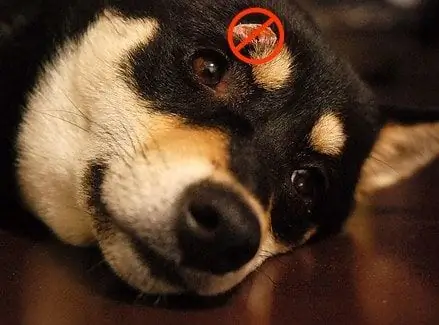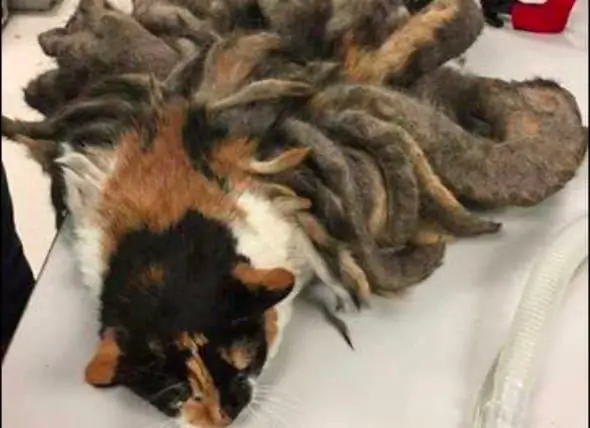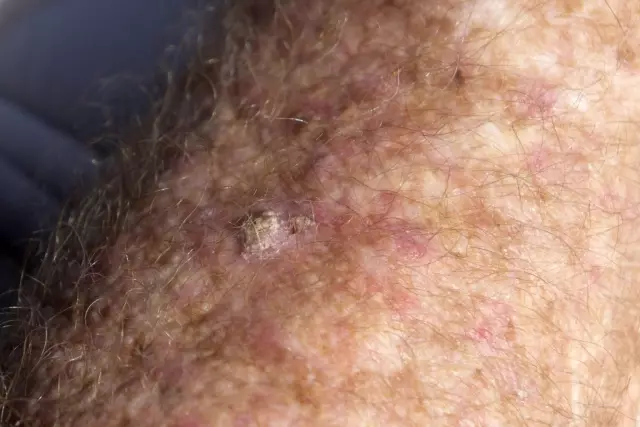
- Autor Daisy Haig [email protected].
- Public 2023-12-17 03:13.
- Modificat ultima dată 2025-01-24 12:41.
Ambii buldogi mei francezi au suferit de tumori inestetice, adesea mâncărime și benigne din punct de vedere tehnic pe care le numim histiocitoame. Deși histiocitoamele se rezolvă de obicei după două până la trei luni, incertitudinea provenienței acestei tumori determină majoritatea medicilor veterinari să o smulgă (sau cel puțin o parte din aceasta) pentru a-i asigura benignitatea.
Un bisturiu chirurgical al unei mase „benigne” vă poate suna extrem, dar, din moment ce histiocitoamele pot fi atât enervante, cât și înfricoșătoare, intervenția chirurgicală este adesea indicată.
Enervant: Deoarece apar adesea pe cap și picioare, locuri în care o masă perfect rotundă, ulcerată poate fi zgâriată sau linsă cu ușurință.
Înfricoșător: pentru că este greu să-ți dai seama dacă ceea ce tocmai a apărut pe pielea câinelui tău (și de obicei se întâmplă rapid) este o tumoare urâtă a celulelor mastocite (sau o altă masă de monstru de acest gen) … sau vărul său mai ușor, histiocitom.
Înfricoșător: pentru că este greu să-ți dai seama dacă ceea ce tocmai a apărut pe pielea câinelui tău (și de obicei se întâmplă rapid) este o tumoare urâtă a celulelor mastocite (sau o altă masă de monstru de acest gen) … sau vărul său mai ușor, histiocitom.
while young dogs (under three years of age) are more likely to get these, they can happen to dogs of any age. indeed, my older frenchie, sophie sue got one about a year ago. she was nine-not exactly a spring chicken. vincent has had three. and he’s not yet two years old.
some breeds are more predisposed. labrador retrievers and boxers, for example. though frenchies aren’t on the list, perhaps they should be… (perhaps they should be on the list for almost everything if my recent round of healthcare scares is any guide.)
ugly and prominently placed as they typically are, most owners want histiocytomas removed. some vets, however, will counsel owners to either wait a few weeks (especially if the dog is young and statistically less likely to be suffering from a malignant mass) or to have a simple section of it snipped (with a local anesthetic) for histopathological analysis at the pathology lab.
other vets will even take a needle poke at it, though most pathologists find that histiocytomas are not easily disgnosed definitively through this method (cytology).
if the dog is older or the mass is especially annoying to the dog or owner, however, we remove the whole sucker and clean up the mess quickly. unfortunately, though, this approach is more costly and usually requires general anesthesia. it’s nonetheless the approach i take for more than half of these tumors…better to be safe than sorry, right?
still, most owners need to know they have a choice. the nervous nellies among you (like me) are less likely to want to stare at a mass for a couple of months to see if it simply goes away. the rational or more anesthetically cautious, however, are justified in waiting-as long as their dog is young and/or hasn’t suffered from malignant masses in the past.
whatever choice you make, consider histiocytomas an excellent foray into the world of skin tumors. it’s like a warm-up for what’s likely to come as your dog ages. and it’s not all bad. look on the bright side: curing cancer is sometimes just a scalpel slice away.
Recomandat:
Pisica Salvată Cu Blană Prost Mată Obține Un Aspect Nou și O Casă Nouă

Într-o poveste care servește atât ca un memento pentru a ține cont de persoanele în vârstă și de animalele lor de companie: o pisică prost acoperită a fost găsită în reședința sa din Pennsylvania, la jumătatea lunii decembrie, după ce proprietarul ei urma să fie plasat într-un azil de bătrâni. Pisica în vârst
Pisicile Pot Fi Infectate Cu Gripa Canină H3N2? - Gripa Canină Trece La Pisici

„Noua” versiune a gripei canine (H3N2) care a început ca un focar 2015 în zona Chicago este din nou în știri. Acum, Universitatea din Wisconsin raportează că „se pare că virusul [gripei] se poate replica și răspândi de la pisică la pisică”. Aflați mai multe despre această amenințare pentru sănătate în curs de dezvoltare aici
Hemangiosarcom Sau Tumoră Benignă - Tratarea Animalelor De Companie Pentru Tumorile De Cancer

Când nu există nicio modalitate de a ști dacă tumoarea animalului dvs. de companie este benignă sau malignă, cum decideți să permiteți sau nu tratamentul medical pentru tumoare?
Tumora Cutanată (histiocitom) La Câini

Un histiocitom este o tumoare benignă a pielii care provine din celulele Langerhans, celule imune care funcționează pentru a oferi imunitate de protecție țesuturilor care sunt în contact cu mediul exterior
Tumora Cutanată (histiocitom) La Pisici

Celulele Langerhans sunt celule imune care funcționează pentru a oferi imunitate de protecție țesuturilor care sunt în contact cu mediul exterior - nasul, stomacul, intestinele și plămânii, dar în principal suprafața pielii. Aceste celule sunt, de asemenea, denumite celule dendritice și histiocite. Un histiocitom este o tumoare benignă a pielii care provine din celulele Langerhans
